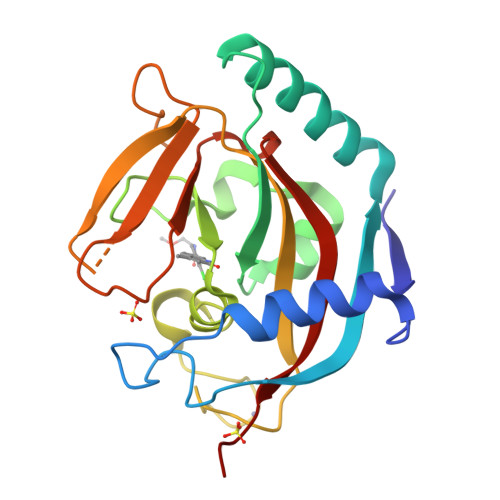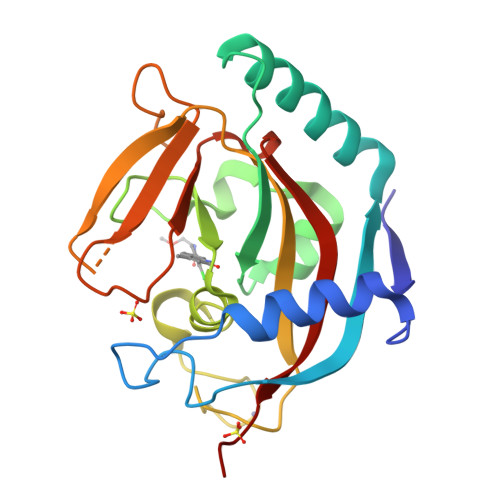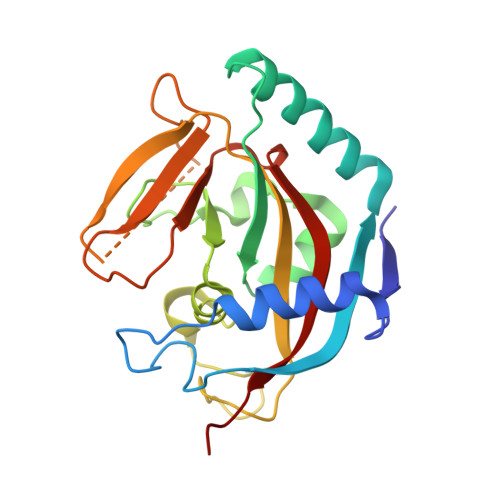Fragment-based ligand design of novel potent inhibitors of tankyrases.
Larsson, E.A., Jansson, A.E., Ng, F.M., Then, S.W., Panicker, R., Liu, B., Sangthongpitag, K., Pendharkar, V., Tai, S.J., Hill, J., Dan, C., Ho, S.Y., Cheong, W.W., Poulsen, A., Blanchard, S., Lin, G.R., Alam, J., Keller, T.H., Nordlund, P.(2013) J Med Chem 56: 4497-4508
- PubMed: 23672613
- DOI: https://doi.org/10.1021/jm400211f
- Primary Citation of Related Structures:
3W51, 4IUE, 4J1Z, 4J21, 4J22, 4J3L, 4J3M - PubMed Abstract:
Tankyrases constitute potential drug targets for cancer and myelin-degrading diseases. We have applied a structure- and biophysics-driven fragment-based ligand design strategy to discover a novel family of potent inhibitors for human tankyrases. Biophysical screening based on a thermal shift assay identified highly efficient fragments binding in the nicotinamide-binding site, a local hot spot for fragment binding. Evolution of the fragment hit 4-methyl-1,2-dihydroquinolin-2-one (2) along its 7-vector yields dramatic affinity improvements in the first cycle of expansion. A crystal structure of 7-(2-fluorophenyl)-4-methylquinolin-2(1H)-one (11) reveals that the nonplanar compound extends with its fluorine atom into a pocket, which coincides with a region of the active site where structural differences are seen between tankyrases and other poly(ADP-ribose) polymerase (PARP) family members. A further cycle of optimization yielded compounds with affinities and IC50 values in the low nanomolar range and with good solubility, PARP selectivity, and ligand efficiency.
Organizational Affiliation:
School of Biological Sciences, Nanyang Technological University, Lab 07-01, 61 Biopolis Drive (Proteos), Singapore 138673. andreas.larsson@ntu.edu.sg





















